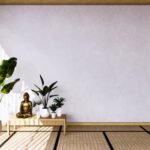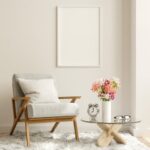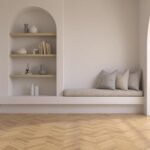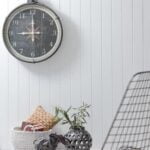As older individuals seek to create comfortable and aesthetically pleasing living spaces, the question arises: should older people use bright colors patterns in home decor? Home decor plays a significant role in the lives of aging individuals, influencing their mood, sense of well-being, and overall quality of life. The choice of colors and patterns can have a profound impact on creating a harmonious and lively ambiance within their homes.
Bright colors have been known to uplift one’s mood and create a more vibrant atmosphere. For older people, incorporating lively hues and striking patterns into their home decor can serve as a source of joy and energy.
While traditional decor often leans towards muted tones, opting for bold colors can inject a sense of modernity and dynamism into their living spaces. However, it is essential for older individuals to consider their personal style preferences when exploring the use of bright colors and patterns in home decor.
By carefully integrating bright colors and patterns into their living spaces while maintaining a cohesive aesthetic, older people can create homes that reflect their unique personalities and tastes. From choosing the right color schemes to selecting complementary patterns, there are various ways for seniors to tastefully incorporate vibrant elements into their decor. Ultimately, the goal is to strike a balance between embracing bold hues and patterns while still creating a comfortable and inviting environment conducive to overall well-being.
Benefits of Bright Colors and Patterns
As older individuals seek to create a comfortable and inviting living environment, the choice of colors and patterns in home decor plays a crucial role. While some may hesitate to use bright colors and bold patterns, there are significant benefits to incorporating vibrant elements into their living spaces. Bright colors have the power to uplift mood, boost energy levels, and create a lively ambiance that can positively impact one’s overall well-being.
Here are some key reasons why older people should consider using bright colors and patterns in their home decor:
1. Enhances Mood: Bright colors like yellows, oranges, and greens are known to evoke feelings of happiness, positivity, and optimism. By incorporating these hues into their living spaces, older individuals can create a more cheerful atmosphere that promotes emotional well-being.
2. Creates Visual Interest: Bold patterns can add visual depth and interest to a room, making it more dynamic and engaging. Whether through colorful accent pillows, patterned rugs, or vibrant artwork, incorporating bold designs can breathe life into an otherwise dull space.
3. Energizes the Space: Bright colors have the ability to energize a room and make it feel more vibrant and alive. By infusing pops of color throughout their home decor, older individuals can create a sense of dynamism that keeps them feeling refreshed and invigorated.
Consideration of Personal Style
As individuals age, their personal style often evolves, reflecting a lifetime of experiences and preferences. When it comes to home decor, older people should not shy away from incorporating bright colors and patterns that bring joy and vibrancy to their living spaces. While some may believe that muted tones are more suitable for older individuals, embracing bold hues can create a lively ambiance that uplifts the mood and adds a sense of energy to their homes.
Embracing Change Without Compromising Personal Style
One key consideration for older individuals looking to integrate bright colors and patterns into their home decor is finding a balance between staying true to their unique aesthetic and embracing new design elements. By carefully selecting colorful accents or statement pieces that resonate with their personal style, older people can create a harmonious blend of traditional elegance with modern vibrancy.
Personalizing Spaces With Meaningful Colors
Another approach to incorporating bright colors and patterns in home decor for older individuals is by infusing spaces with meaningful hues and designs. Whether it’s choosing vibrant artwork that holds sentimental value or incorporating patterns inspired by cherished memories, adding personal touches can make the use of bold colors more intentional and reflective of one’s life journey.
By curating a collection of items that speak to them on a personal level, older people can create a space that not only looks visually appealing but also resonates deeply with who they are.
In essence, older people should feel empowered to experiment with bright colors and patterns in their home decor while staying true to their unique aesthetic preferences. By approaching design decisions with creativity and intentionality, they can create living spaces that not only look visually stunning but also reflect their individuality and zest for life.
Ultimately, the key is to strike a balance between traditional elegance and modern vibrancy, allowing each element to coexist harmoniously in creating an inviting and personalized home environment.
Contrasting Traditional vs Modern Decor
As older individuals consider refreshing their home decor, the debate between traditional muted tones and modern bold hues becomes a crucial point of consideration. Traditional decor often features neutral colors like beige, brown, and cream, which create a sense of warmth and timelessness. On the other hand, modern decor embraces vibrant shades such as teal, mustard yellow, or coral to bring energy and a contemporary touch to living spaces.
One key factor for older people to ponder is how they want their home to reflect their personality and lifestyle. While traditional decor emphasizes understated elegance and sophistication, modern design allows for creative expression and individuality through striking colors and patterns. Bright hues can add a playful or eclectic flair to the environment, showcasing a more upbeat and dynamic style that resonates with many older individuals looking to revitalize their living spaces.
When deciding between traditional versus modern decor styles, it is essential for older people to strike a balance that aligns with their preferences and comfort level. It’s entirely possible to blend elements from both approaches by incorporating pops of color or subtle patterns into a primarily neutral palette. This integration allows for a harmonious fusion of classic charm with contemporary vibrancy, resulting in a personalized home design that reflects the unique character of its inhabitants.
| Traditional Decor | Modern Decor |
|---|---|
| Neutral colors like beige, brown, cream | Vibrant shades like teal, mustard yellow, coral |
| Understated elegance and sophistication | Creative expression and individuality |
| Timeless appeal | Contemporary touch |
Tips for Integrating Bright Colors and Patterns
When it comes to home decor for older individuals, the use of bright colors and patterns can play a significant role in creating a lively and vibrant living space. While some may hesitate to experiment with bold hues, research has shown that incorporating vibrant elements into the decor can uplift mood and overall well-being. Therefore, older people should not shy away from using bright colors and patterns in their homes.
One practical way to integrate bright colors and patterns into home decor is by starting small. For those who are hesitant about making drastic changes, adding pops of color through accessories like throw pillows, artwork, or rugs can be a great first step. Additionally, consider incorporating colorful accent pieces such as vases or decorative objects to add visual interest without overwhelming the space.
Another tip for tastefully incorporating bright colors and patterns is to mix and match different elements while keeping the overall color palette cohesive. Pairing complementary colors or choosing patterns that share similar tones can help create a harmonious look. Additionally, consider balancing bold colors with neutral shades to prevent the decor from feeling too overwhelming.
Overall, older individuals should feel empowered to embrace bright colors and patterns in their home decor. By following these practical tips and considering personal style preferences, older people can create a vibrant and joyful living environment that reflects their unique aesthetic while positively impacting their well-being.
| Benefit | Data |
|---|---|
| Uplift Mood | Research shows that vibrant colors can uplift mood |
| Visual Interest | Adding pops of color through accessories creates visual interest |
| Cohesive Look | Mixing complementary colors maintains a cohesive color palette |
Impact on Overall Well-Being
Bright colors and patterns can have a profound impact on the overall well-being of older individuals when incorporated into their home decor. These vibrant elements have the power to uplift moods, create a lively ambiance, and foster a sense of joy and energy within living spaces. By strategically using bright colors and patterns, older people can transform their homes into comfortable sanctuaries that reflect their unique personalities while promoting a positive mindset.
Enhancing Mood and Energy Levels
The use of bright colors such as yellows, oranges, and greens can stimulate feelings of happiness and warmth in older individuals. By incorporating patterns like floral prints or geometric designs, one can add visual interest and vibrancy to different areas of the home. These elements not only enhance the aesthetic appeal but also contribute to boosting mood and energy levels, creating an atmosphere that feels welcoming and uplifting.
Promoting Creativity and Inspiration
Bold colors and patterns can act as catalysts for creativity and inspiration in older people’s daily lives. Vibrant hues like reds or blues can ignite passion and motivation, while dynamic patterns such as stripes or chevron can spark imagination.
By infusing these elements into home decor, seniors can cultivate a space that encourages exploration, self-expression, and a renewed sense of vitality. This creative environment may lead to increased engagement with hobbies, social activities, or simply enjoying the comforts of home.
Fostering Positive Social Interactions
Incorporating bright colors and patterns into home decor can also create an inviting atmosphere for social interactions with family and friends. Bold hues combined with interesting textures or prints serve as conversation starters and make guests feel welcomed into a vibrant space.
Older individuals who embrace colorful decor may find themselves more inclined to host gatherings, engage in meaningful conversations, and strengthen connections with loved ones. Ultimately, using bright colors and patterns in home design can enhance social well-being by fostering positive relationships within the comfort of one’s own residence.
Examples of Successful Colorful Home Decor
Bright colors and patterns can add a sense of vibrancy and energy to any living space, regardless of age. For older individuals, incorporating bold hues into home decor can be especially beneficial in creating a lively ambiance that promotes positivity and enjoyment. While there may be hesitance around using bright colors and patterns among older demographics, the truth is that these elements can greatly enhance the overall atmosphere of their living spaces.
Here are some real-life examples of older people who have successfully incorporated bold colors and patterns into their home decor:
- A retired couple in their 70s decided to revamp their living room with vibrant accent pillows in various shades of red, yellow, and blue. The addition of colorful throw rugs and artwork brought new life to the space, creating a warm and inviting environment for social gatherings.
- An elderly individual living alone chose to paint one feature wall in her bedroom a deep emerald green, complemented by floral-patterned curtains and bedding. This bold choice added character to the room without overwhelming the rest of the decor.
- A senior citizen with an interest in eclectic styles mixed traditional furniture pieces with modern accessories in bright pops of color like fuchsia and turquoise. By blending different design elements, this individual created a unique and personalized home that reflects their vibrant personality.
By showcasing these inspiring real-life examples, older individuals can see how incorporating bright colors and patterns into their home decor can truly transform their living spaces for the better. From small accents to bolder choices, there are endless opportunities to infuse energy and joy into your surroundings while maintaining a sense of style that speaks to your unique tastes.
Ultimately, embracing bold hues can have a significant impact on your well-being by creating a more dynamic and uplifting environment to enjoy every day.
Conclusion
In conclusion, the question of whether older people should use bright colors and patterns in home decor is not just about aesthetics but also about enhancing their overall well-being. As discussed throughout this article, vibrant hues can uplift mood, create a lively ambiance, and add a sense of energy to living spaces.
By incorporating bright colors and patterns into their home decor, older individuals have the opportunity to express their personal style while creating a more joyful environment for themselves.
It is important for older people to consider their personal style when deciding to integrate bold colors and patterns into their home decor. Whether they lean towards traditional muted tones or modern bold hues, finding a balance that resonates with their aesthetic preferences is key. By exploring different decorating styles and experimenting with various combinations, older individuals can create a space that reflects their personality while embracing the benefits of vibrant colors.
Ultimately, older people should feel empowered to explore the possibilities of incorporating bright colors and patterns in their home decor. From simple accents like throw pillows and artwork to more daring choices like statement furniture pieces or wallpaper, there are endless ways to infuse color and vitality into living spaces. By taking inspiration from real-life examples of successful colorful home decor, older individuals can embark on a creative journey that enhances both their physical surroundings and emotional well-being.
Frequently Asked Questions
What Is the Color Scheme for Elderly People?
The color scheme for elderly people often revolves around softer, more muted tones. Colors like pastels, neutrals, and earthy tones are commonly used in clothing, home decor, and healthcare facilities for the elderly.
Can Old People Wear Bright Colours?
Old people can definitely wear bright colors if they enjoy them and feel comfortable in them. While there may be stereotypes about older individuals sticking to neutral colors, personal preference should always take priority when it comes to fashion choices.
What Color Is Calming for Elderly?
One color that is often found to be calming for the elderly is blue. Blue is associated with feelings of calmness, tranquility, and relaxation. Soft shades of blue can help create a soothing environment for seniors, whether it’s in their clothing or living space.

I’m thrilled to be your companion on this exciting journey through the world of home decor and design. With a passion for turning houses into homes and a keen eye for the finer details, I’m here to help you transform your living spaces into beautiful, functional, and meaningful havens.





